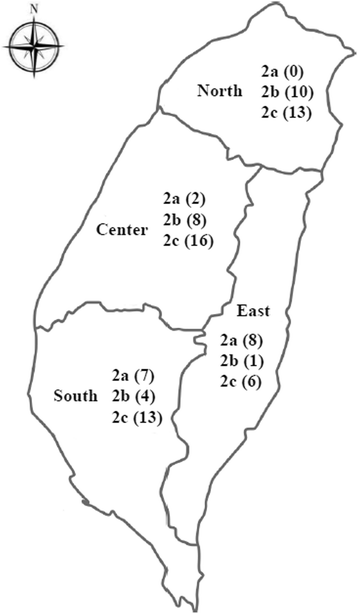Identification of a novel canine parvovirus type 2c in Taiwan
- PMID: 27663840
- PMCID: PMC5035481
- DOI: 10.1186/s12985-016-0620-5
Identification of a novel canine parvovirus type 2c in Taiwan
Abstract
Background: Taiwan has been considered free from canine parvovirus type 2c (CPV-2c) based on the last report of canine parvovirus type 2 (CPV-2) surveillance. However, since January 2015, the first report of CPV-2c in a puppy has occurred in Taiwan. There is currently limited information about the CPV-2c variant in Taiwan. In the present study, we characterized the previously unidentified CPV-2c variant and investigated the distribution of CPV-2 variants in Taiwan.
Methods: During January 2014 to April 2016, fecal or rectal swab samples from 99 dogs with suspected CPV-2 infection in Taiwan were collected. Eighty-eight were identified as being either CPV-2a, -2b or -2c variants positive by real-time PCR and sequence analysis.
Results: Sequence analysis of the 88 isolates confirmed CPV-2c as the dominant variant (54.6 %), followed by CPV-2b (26.1 %) and CPV-2a (19.3 %). Phylogenetic analysis demonstrated that the recent CPV-2c variants are similar to the Chinese CPV-2c strain but can be considered as novel Asian CPV-2c isolates.
Conclusion: The present study provides evidence for the existence of a novel CPV-2c variant in Taiwan.
Keywords: CPV-2c; Canine parvovirus; Taiwan.
Figures



References
LinkOut - more resources
Full Text Sources
Other Literature Sources
Miscellaneous

